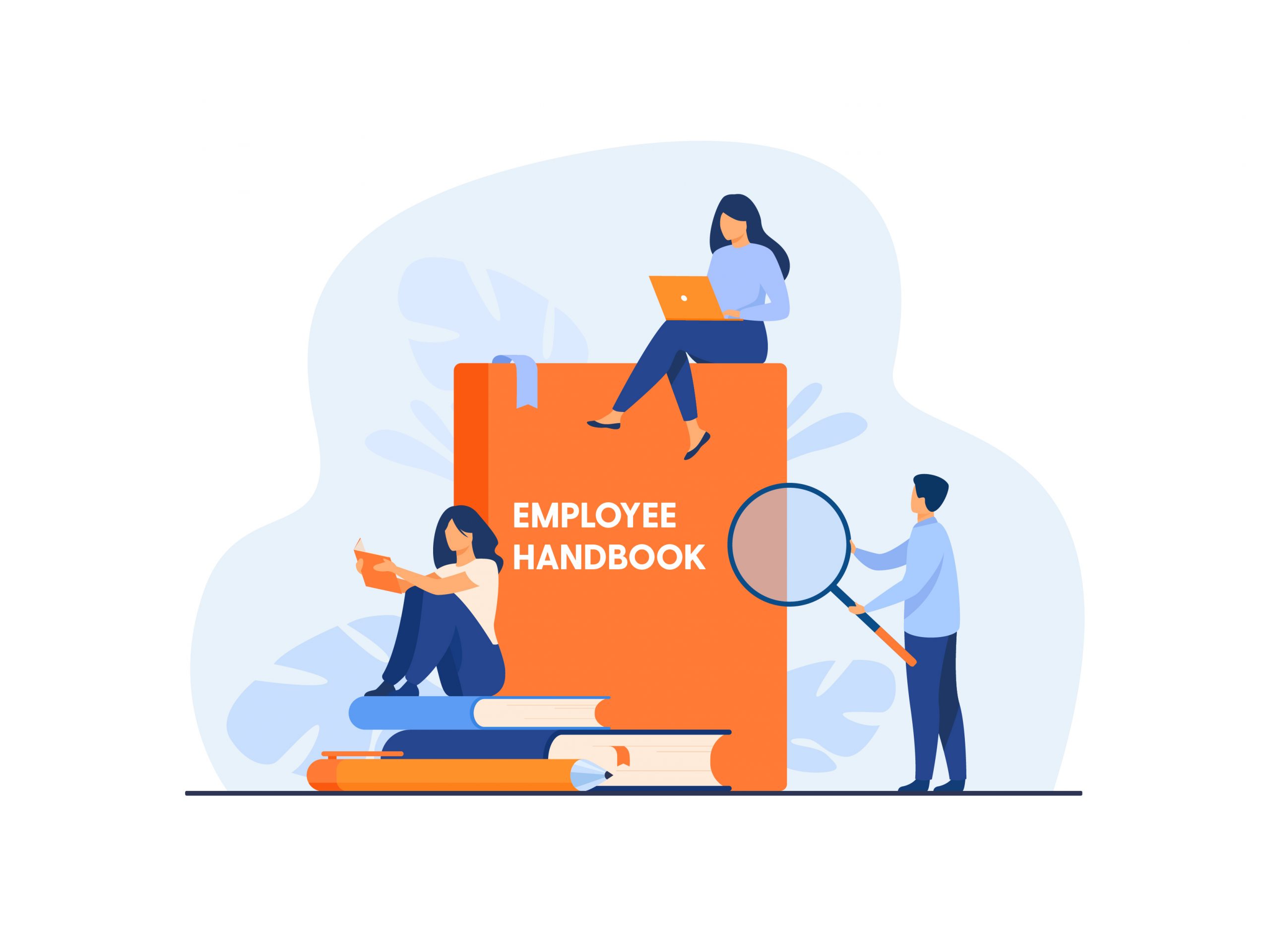Even without big changes in your workplace, your employee handbook likely needs an update every year, including 2023. Employee handbook updates are becoming increasingly important, as we’ve previously talked about how, when, and why to update. Reviewing your handbook quarterly is best, but you’ll definitely need to check for outdated policies at least once a year.
From global pandemics to unprofessional fads on social media, businesses often need to develop new policies on the fly. It’s easy to forget about the employee handbook while you’re busy training employees and interpreting new regulations. New federal holidays (like Juneteenth) and changing drug laws (like marijuana legalization) may need to be addressed in your updated employee handbook.
Top 10 Employee Handbook Updates for 2023
The COVID-19 pandemic brought a lot of fast-paced changes in recent years, and some changes (like remote work) seem popular enough to stick around. Your workplace and policies may have gone back to pre-pandemic routines, but the employee handbook still needs to be reviewed and updated.
Work arrangements
If you have more employees working remotely, then a lot of policies need to be adjusted. Remote, hybrid, and flex workers need clear expectations (like email response times) as well as flexible support (like with windowed work hours).
Working parents may need more flexibility. The number of stay-at-home dads has risen by a third since the pandemic, but many parents want to continue working at least part time. Hourly workers who go beyond 40 hours also expect overtime pay. An outdated handbook can become a liability with compliance issues like classifying salaried and exempt employees.
Employee wellness
You don’t need Maslow’s whole hierarchy pyramid to see that employees need more than just a paycheck. Health insurance is a great start, but your workers really have at least three categories of needs: physical, mental, and financial.
Overstressed and unappreciated workers can still quit jobs that lack mental health support for a work life balance. Consider adding new and emerging perks and benefits to keep up with the times.
Time off policies
PTO and sick leave policies need to be clearly explained in the handbook. Limit the amount of vacation rollover to encourage employees to use their PTO. Make sure your handbook aligns with FMLA and other local, state, and federal regulations.
Diversity, equality, & inclusion
A renewed emphasis on DEI has been one of the top workplace trends of 2023. Employee handbook updates must reflect this. From advertising job openings to training workers for advancement, DEI can improve resilience and foster innovation at your company.
Pay policies
Even without the complications of remote work, many companies have increased wages and adjusted hourly schedules. Minimum wage increases and inflation have ripple effects on other wage expectations and the cost of living.
Make sure your company is getting ready for pay transparency, checking for pay disparities. Your state’s legislators may not be interested in pay transparency requirements, but workers can always choose to discuss their wages.
Organizational chart
Your company needs an org chart to clarify workflow communication and accountability within the chain of command. The size and structure of your company will dictate exact needs. Since the org chart changes with staffing, your employee handbook may just include a hyperlink or directions to find the current chart.
Data security
Do remote workers use two-factor authentication for logins? Your employee handbook should discuss appropriate rules for company equipment, from downloading email attachments to personal use. Policies may be explained in special training sessions, but they should also be outlined in the handbook.
Dress code and other workplace policies
During the pandemic, a lot of workers got into the habit of dressing casually at home. How much has your dress code (or employees’ attitude) changed with the “new normal”?
- In most of the United States, the CROWN Act (or similar legislation) has outlawed rules against certain race-related hair styles and similar forms of discrimination.
- What happens when employees want to bring a friend or visitor to the office?
- What if an employee wants to hang flyers for their side business or a local event?
Subjective, case-by-case judgment calls can lead to rumors of favoritism. Prevent awkward situations by developing clear policies on visitors, solicitation, and distribution in the workplace.
COVID Policies
The COVID-19 Public Health Emergency officially ended on May 11, 2023, but that doesn’t mean the virus has disappeared. Will your company have any long term policies for workers with fever and other symptoms of contagious illnesses? Is your company prepared for another pandemic in the future?
Marijuana/drug use & testing
Medical use of marijuana has been legalized in 38 states, and a growing number have legalized recreational use. The U.S. Department of Health and Human Services (HHS) is in the process of reviewing the scheduling decision on cannabis this year. You may not want to test for marijuana in pre-employment drug screens, but you still need clear policies as an employer.
Discover how Netchex can help with 2023 employee handbook updates and more:
Related articles

Solving Auto Dealership HR & Payroll Pain Points: The Best Practices Guide 2025-2026

Best Practice Guide for Improving Your Hourly Worker Employee Experience

Top 5 Reasons Why Hourly Workers Leave Jobs

